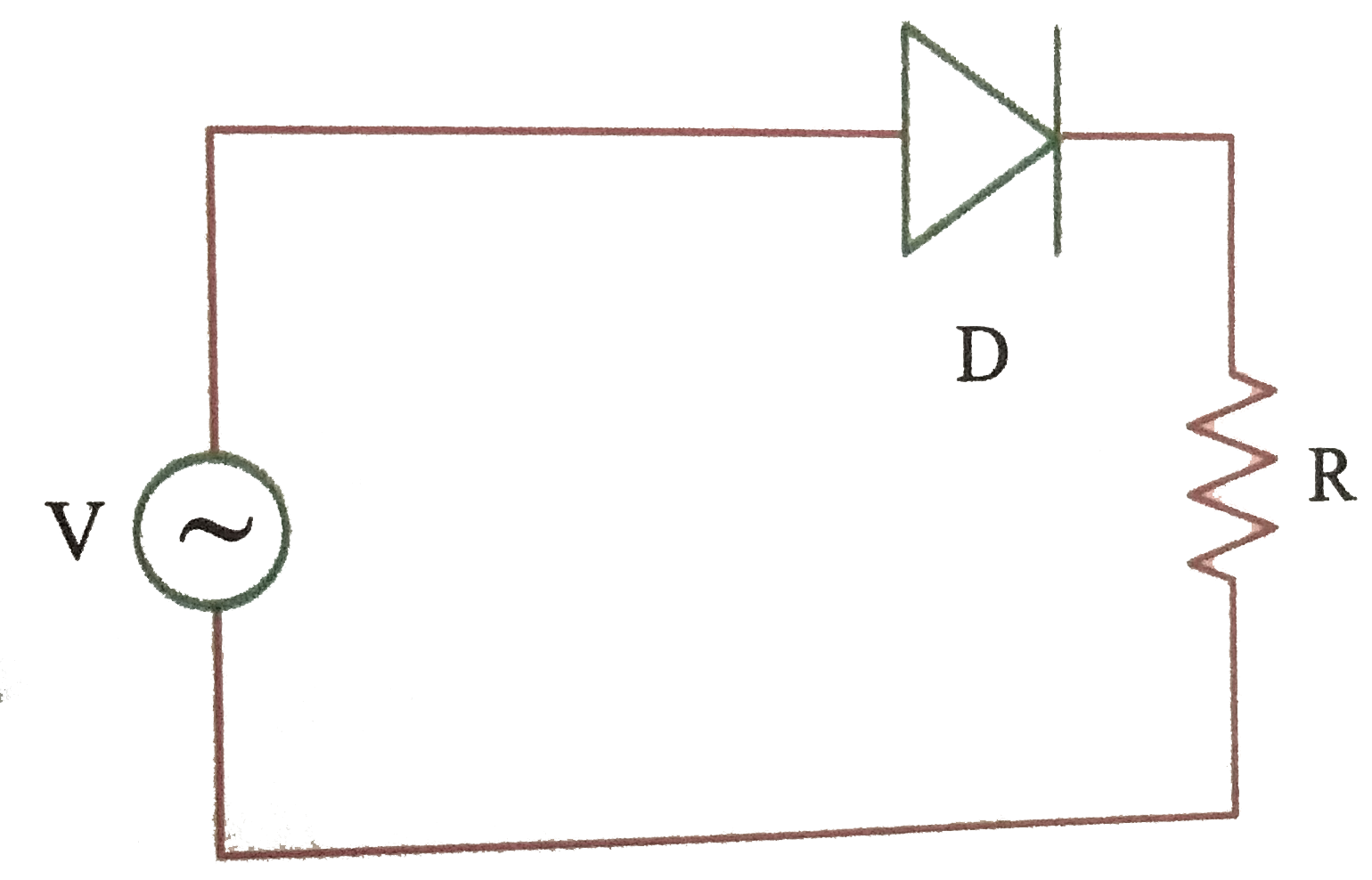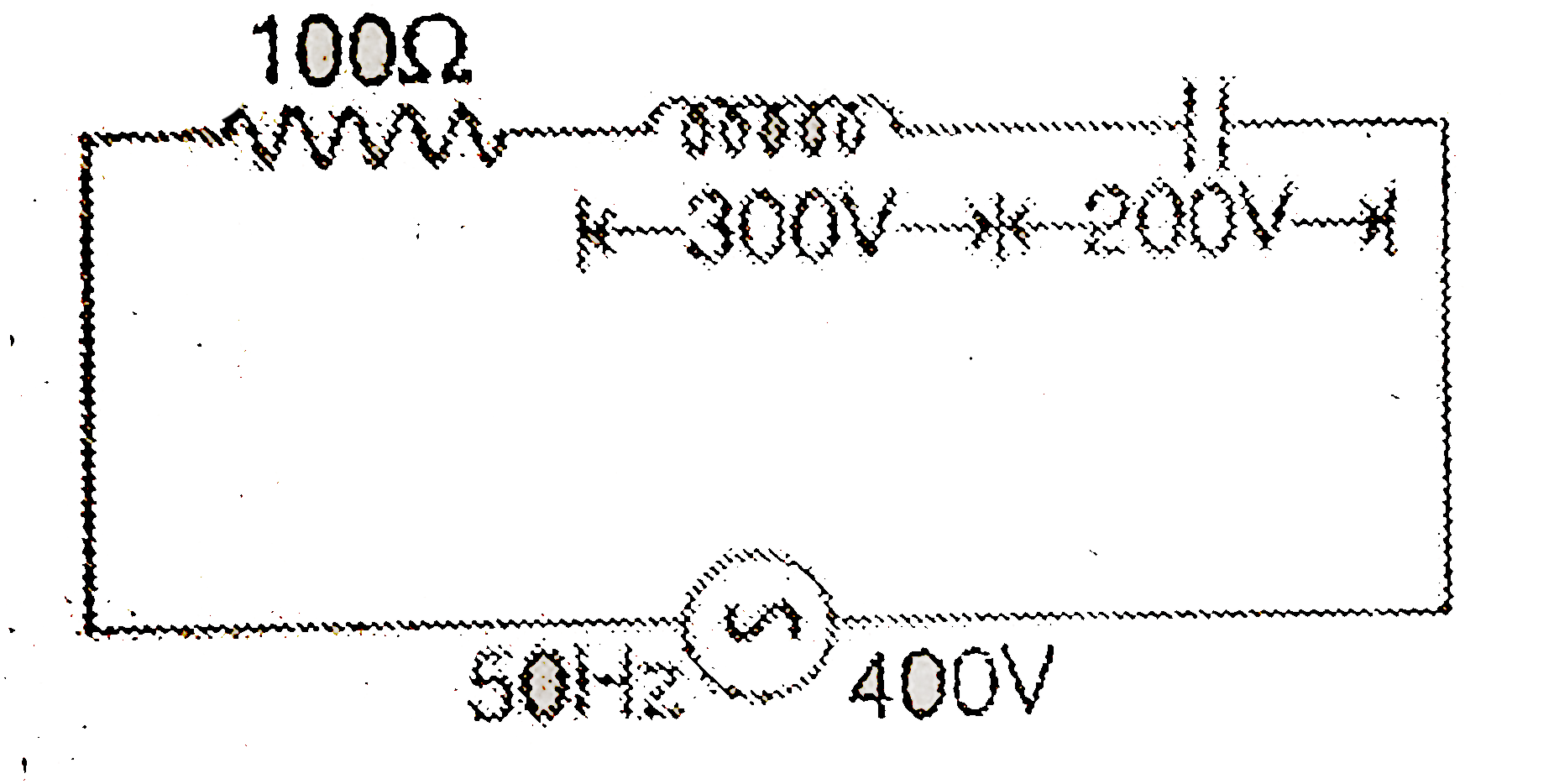A p−n junction (D) shown in the figure can act as a rectifier. An alternating current source (V) is connected in the circuit.
 .
.
Figure (4)
Figure (3)
Figure (2)
Figure (1)
The correct Answer is:B
The input wave is shown in the figure.

From 0 to T/2 the diode is forward biased and the current flows through R From T/2 to T the diode is reverse biased and no current will flow through R. Hence we get d.c. pulses as shown in figure (3).
Topper's Solved these Questions
Similar Questions
A lamp with a resistance of 8Ω is connected to a choke coil as shown in fig. this arrangement is connected to an alternating source of 110V. The current in the circuit is 11A. The frequency of the ac is 60 Hz. Find
(a) the impedence of the circuit and
(b) the value of inductive of the choke coil.

View SolutionAn ac source is connected to two circuits as shown Obtain current through resistance R at resonance in both the circuits
 .
.
View Solution
Knowledge Check
a p -n juction (D) shown in the figure can act an a rectifier An alternatting current source (V) is connected in the circuit

The corrent (I ) in the resistor® can be shown by :A B
B C
C D
D
The circuit shown in the figure acts as
 AOR gateBAND gateCNOT gateDNAND gate
AOR gateBAND gateCNOT gateDNAND gatep−n junction diode acts as
Aohmic resistanceBnon-ohmic resistanceCboth 1 and 2Damplifier
The circuit shown in figure below will act as

View SolutionThe given figure shows a rectifier of alternating current (f=50 c/s), the number of pulses of rectified current obtained in 1s is

View SolutionAssertion : When two semi conductor of p and n type are brought in contact, they form p-n junction which act like a rectifier.
Reason : A rectifier is used to convent alternating current into direct current.
View SolutionIn the circuit shown in figure current in the circuit is

View SolutionIn a p- n junction diode not connected to any circuit,
View Solution

